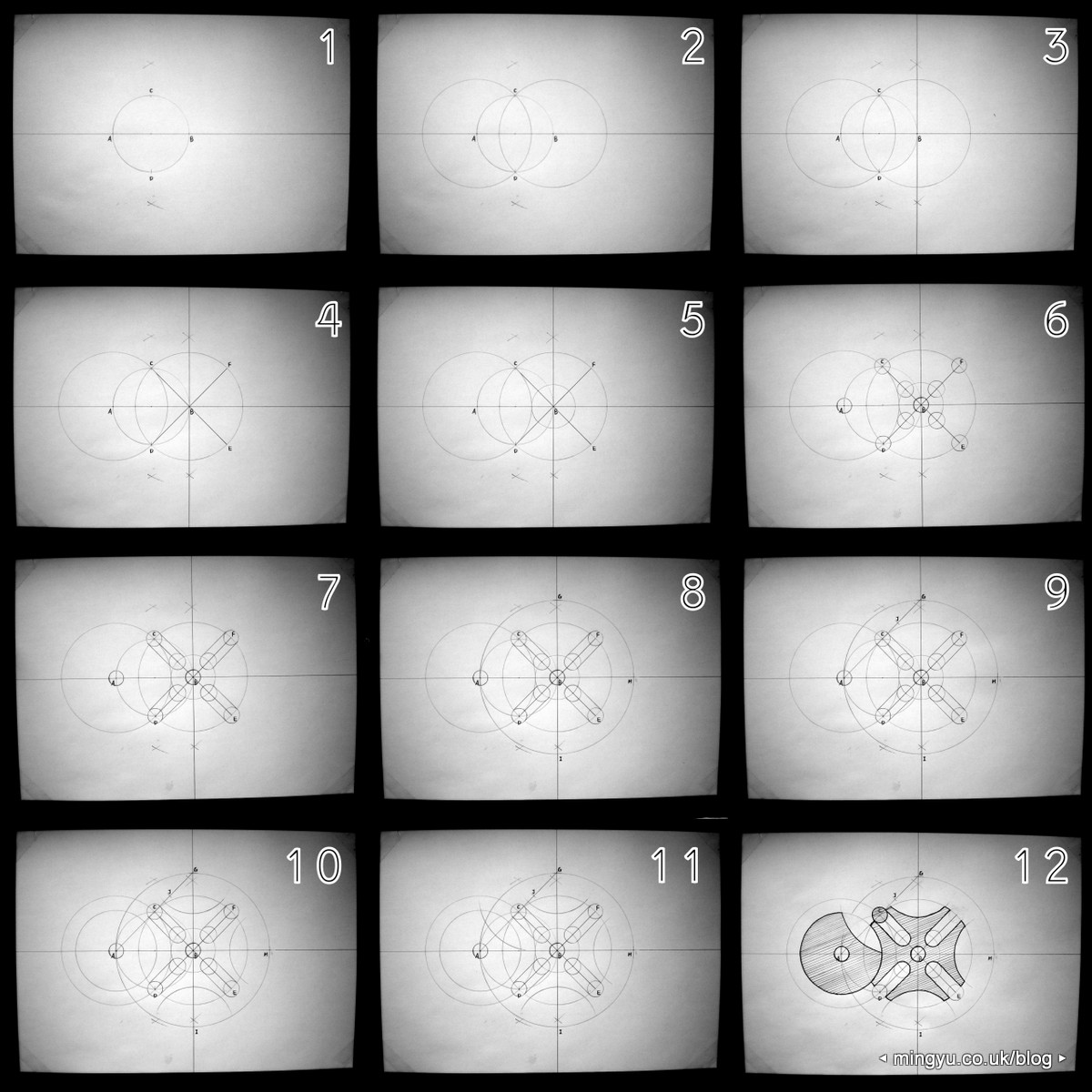|
|
|
| |
|
Geneva Drive (4 position) |
|
|
| |
- Draw a circle with a line running through its centre. Label the two points where they intersect
A and B, and mark their midway points C and D: to do this, open your compass a bit further (doesn't matter how much) and mark the points where two circles centred on A and B would intersect. Draw an imaginary line through these two points and the places where it intersects the first circle are your midway points C and D.
- Draw two circles centred on
A and B with a radius of AC (the distance between A and C).
- Using the technique from step 1, draw the midway line of the circle centred on
B.
- Draw a line through
C and B and one through D and B. Label the places where they touch the circle as E and F.
- Draw a circle that centres on
B and is tangent to circle A. Note that it intersects the straight lines from step 4 at four points.
- Using these four points as the centre, draw small circles with a radius of about 1/3 of the previous circle. Also do this for points
A, B, C, D, E and F.
- Join these circles up with parallel lines to form 4 'spokes' radiating out from point
B.
- Draw a circle centred on
B with a radius of AB. Mark the points where it intersects the straight lines as G, H and I.
- Draw a straight line through
A and C and mark the length of AB with point J.
- Draw a circle centred on
A that is smaller than the existing large circle and doesn't touch the small circles centred on C and D. Using the same radius, draw circles (or just curves) centred on G, H and I.
- Using the radius of the largest circle centred on
A, draw a circle (or curve) centred on J.
- Shade in and/or outline the Geneva drive.
[Source: http://mingyu.co.uk/blog/compass-and-straightedge-geneva-drive/]

[Source: http://mingyu.co.uk/content/7.blog/6.compass-and-straightedge-geneva-drive/geneva-drive.jpg]
|
|
|
|
|



